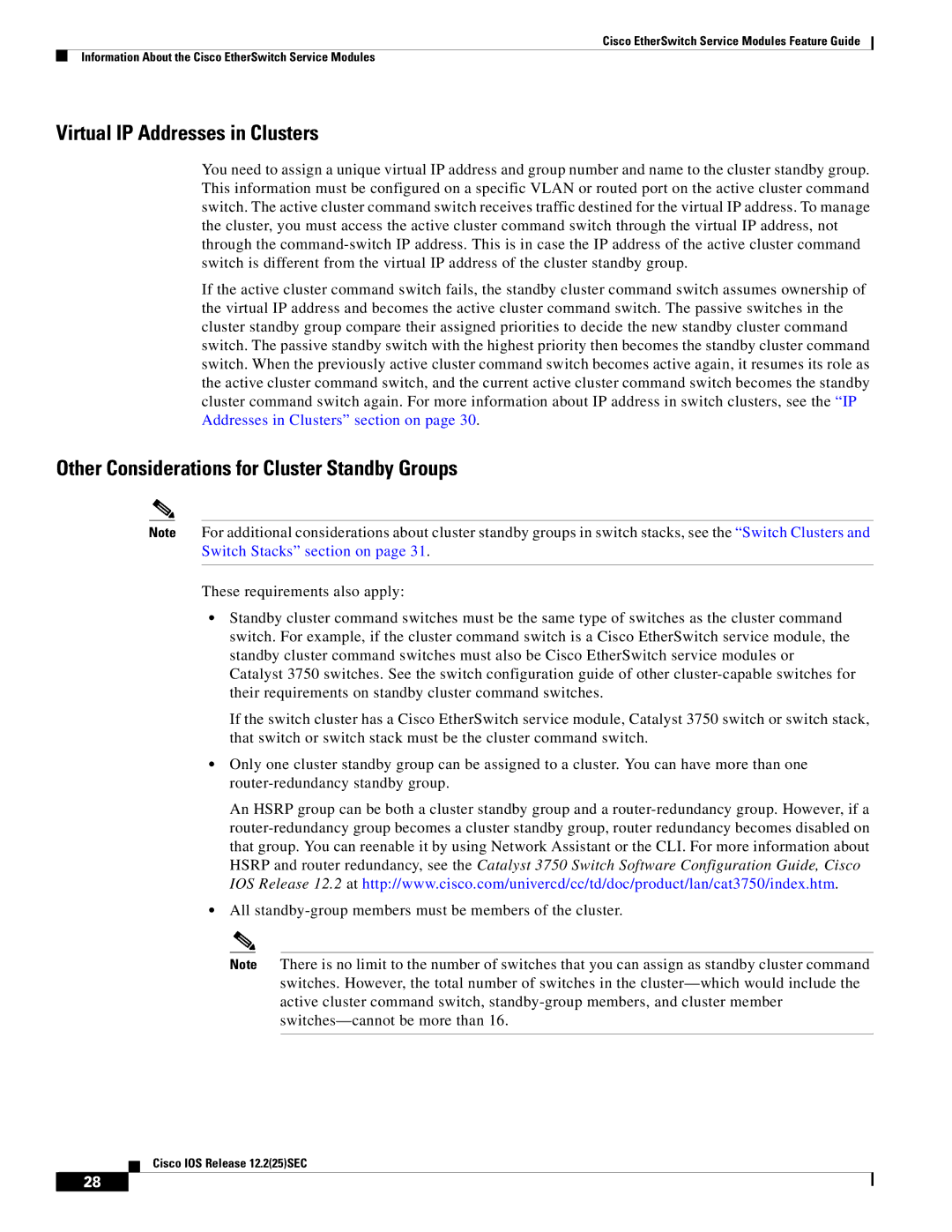
Cisco EtherSwitch Service Modules Feature Guide
Information About the Cisco EtherSwitch Service Modules
Virtual IP Addresses in Clusters
You need to assign a unique virtual IP address and group number and name to the cluster standby group. This information must be configured on a specific VLAN or routed port on the active cluster command switch. The active cluster command switch receives traffic destined for the virtual IP address. To manage the cluster, you must access the active cluster command switch through the virtual IP address, not through the
If the active cluster command switch fails, the standby cluster command switch assumes ownership of the virtual IP address and becomes the active cluster command switch. The passive switches in the cluster standby group compare their assigned priorities to decide the new standby cluster command switch. The passive standby switch with the highest priority then becomes the standby cluster command switch. When the previously active cluster command switch becomes active again, it resumes its role as the active cluster command switch, and the current active cluster command switch becomes the standby cluster command switch again. For more information about IP address in switch clusters, see the “IP Addresses in Clusters” section on page 30.
Other Considerations for Cluster Standby Groups
Note For additional considerations about cluster standby groups in switch stacks, see the “Switch Clusters and Switch Stacks” section on page 31.
These requirements also apply:
•Standby cluster command switches must be the same type of switches as the cluster command switch. For example, if the cluster command switch is a Cisco EtherSwitch service module, the standby cluster command switches must also be Cisco EtherSwitch service modules or Catalyst 3750 switches. See the switch configuration guide of other
If the switch cluster has a Cisco EtherSwitch service module, Catalyst 3750 switch or switch stack, that switch or switch stack must be the cluster command switch.
•Only one cluster standby group can be assigned to a cluster. You can have more than one
An HSRP group can be both a cluster standby group and a
•All
Note There is no limit to the number of switches that you can assign as standby cluster command switches. However, the total number of switches in the
Cisco IOS Release 12.2(25)SEC
28
